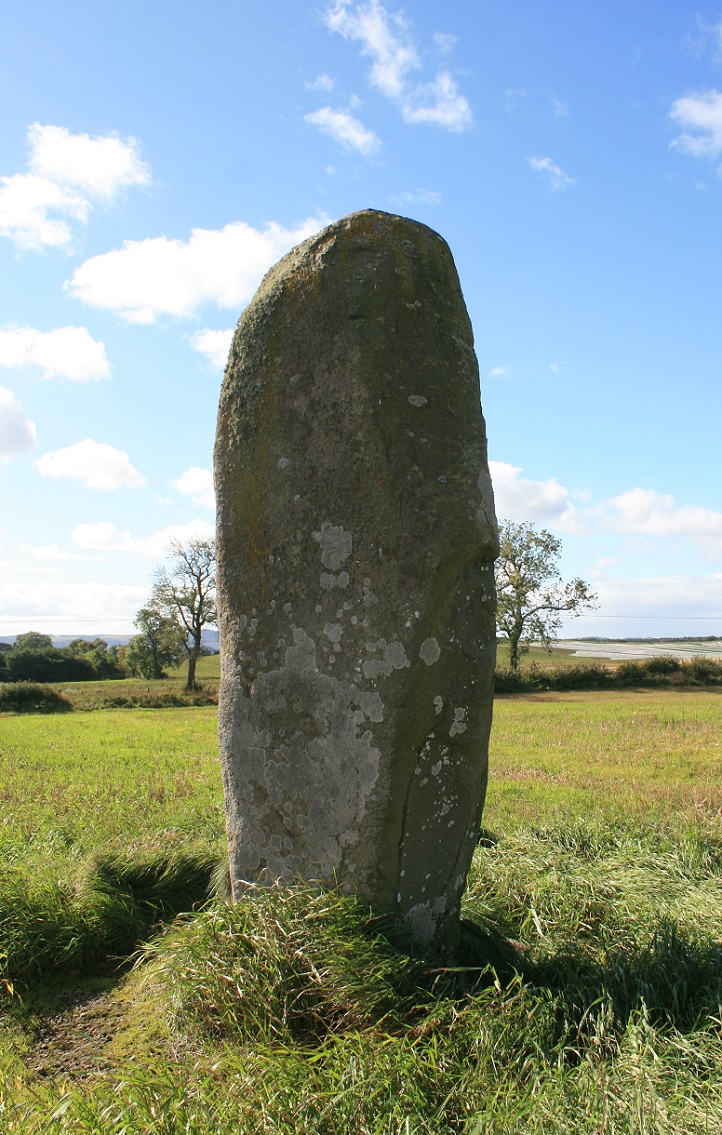
As seen on 10 April 2025 CE

As seen on 10 April 2025 CE










The SW stone

The SW stone

Quartz veins on the NE stone

The NE stone

The NE stone
I came here once a long time ago, but have no digital pictures, which was the only reason I needed to make the detour further up north to the lovely Loch Leven.
The fact that this pair of standing stones are tall, strong and good looking stones that over look the western edge of the Lomond hills (which are actually miles away from the Loch of the same name)had something to do with it as well.
No map needed here much either, easily seen on the north side of the A911 between Milnathort and Wester Balgedie, opposite Orwell farm, which gives the stones their names, named after a farm, how inglorious.
There’s no where good to park, I made do with blocking a field entrance, leaving kids in the car, and jumping the fence for a ten minute quick meet and greet. Hi I’m the postie, no not that one, and you are? big stone? ok, and your friend there? he’s big stone too eh? Not very talkative, stones, it’s nearly always a rather one sided conversation.
Two stones, separated by about fifteen yards, one stone is tall and bulbous, with rounded edges, the other is more angular, rough and sporting the undressed look. The rough stone has pinky quartz veins on it’s lower half of one side, the side facing the other stone. Both stones have been reset in concrete.
The Lomond hills fall away quickly on it’s western edge and the look is of dramatic scree and cliffs. Further north along the hills is a hill prosaically named West Lomond, it has a cairn upon it’s summit and can be seen framed by these tall stones, if you stand in the right place of course.
A good stone pair.
About half-a-mile above the old churchyard, in a field by the roadside, are two large upright stones, known as “the Standing Stones of Orwell.” They are placed east and west of each other about fifteen yards apart – that to the west is flat, and about six feet in height – the one to the east is of a round form, tapering slightly to the ground, and stands nine feet high. The latter, although still of considerable size, has lost somewhat of its circumference within the last ten years, and, at the present moment, there is a large crack down one side, which, by the action of the weather, will lead to a further diminution of its bulk. It has not been ascertained to what depth these stones are embedded in the earth, but it must be considerable, in order to retain them in the position they occupy.
The common belief is, that these stones are of Danish origin, erected in commemoration of a victory, or to mark the spot where those who had fallen in battle were interred. This supposition is so far countenanced by the fact that a stone coffin, of large size, was found on digging up the space between the stones. Similar coffins have also been turned up in the same field, and, ten or twelve years ago, the ground was dug up in several places by a neighbouring proprietor, when large quantities of bones, much decomposed and mixed with charcoal, were discovered.
[...] Plausible as this [Danish] theory is, it nevertheless can scarcely be supposed that the Danes would be disposed to waste so much time in their marauding incursions, as the conveyance and erection of these stones would require, and the more especially as, during the time that they were so employed, they would be constantly exposed to the attacks of th enatives, who would be afforded ample time to gather in force, and who by no means relished the presence of such visitors. Moreover, had these been Danish monuments, they would, in all probability, have been overturned by the natives the moment that the invaders turned their backs. The most probable conclusion is , that both these stones, and those at Lundin, which are of much greater height, formed part of Druidic circles, and it is only by adopting some such conclusion that we can account for their preservation to the present time.
A healthy dose of scepticism from ‘W.H.’, in ‘The Scottish Journal‘ (issue 3, 1847).






















































